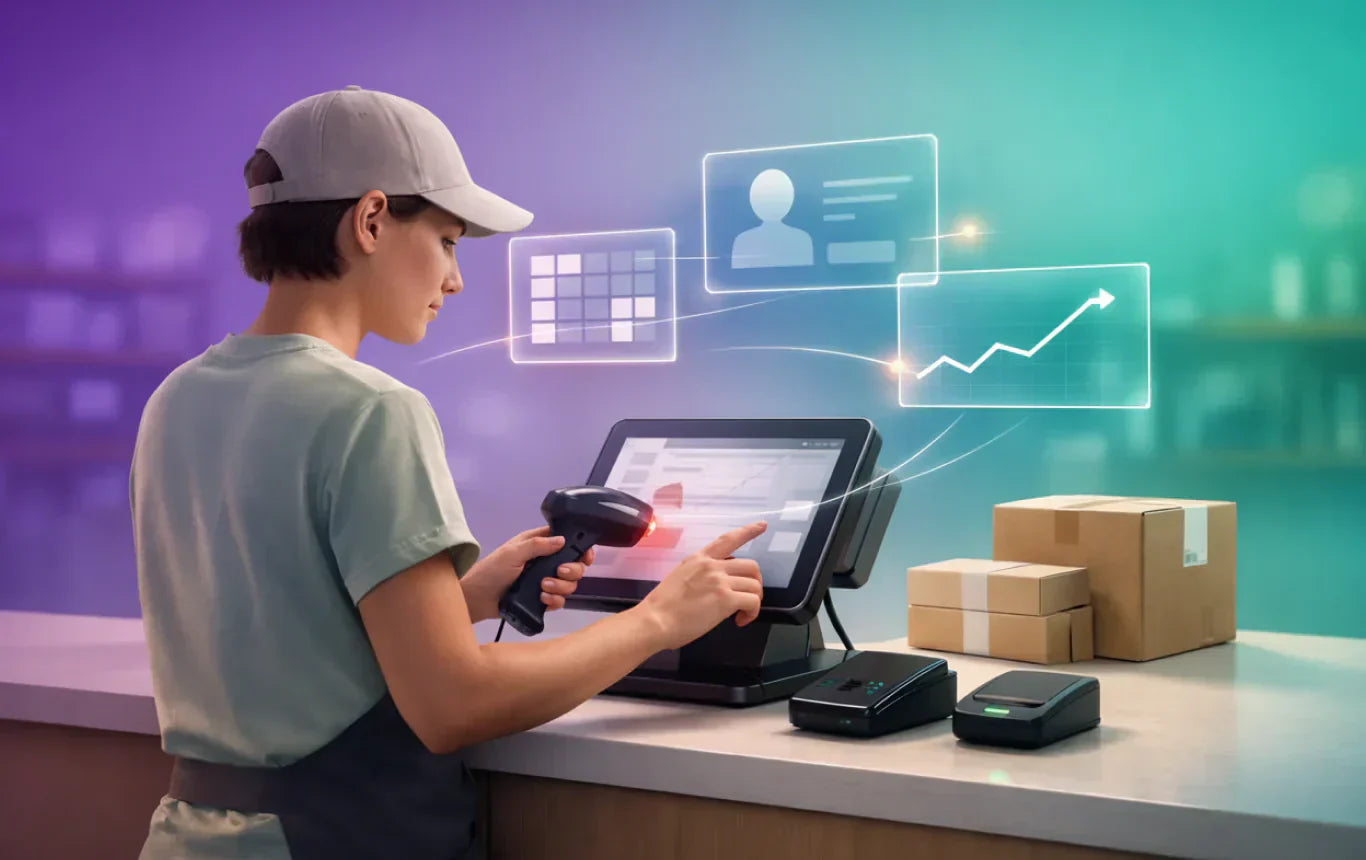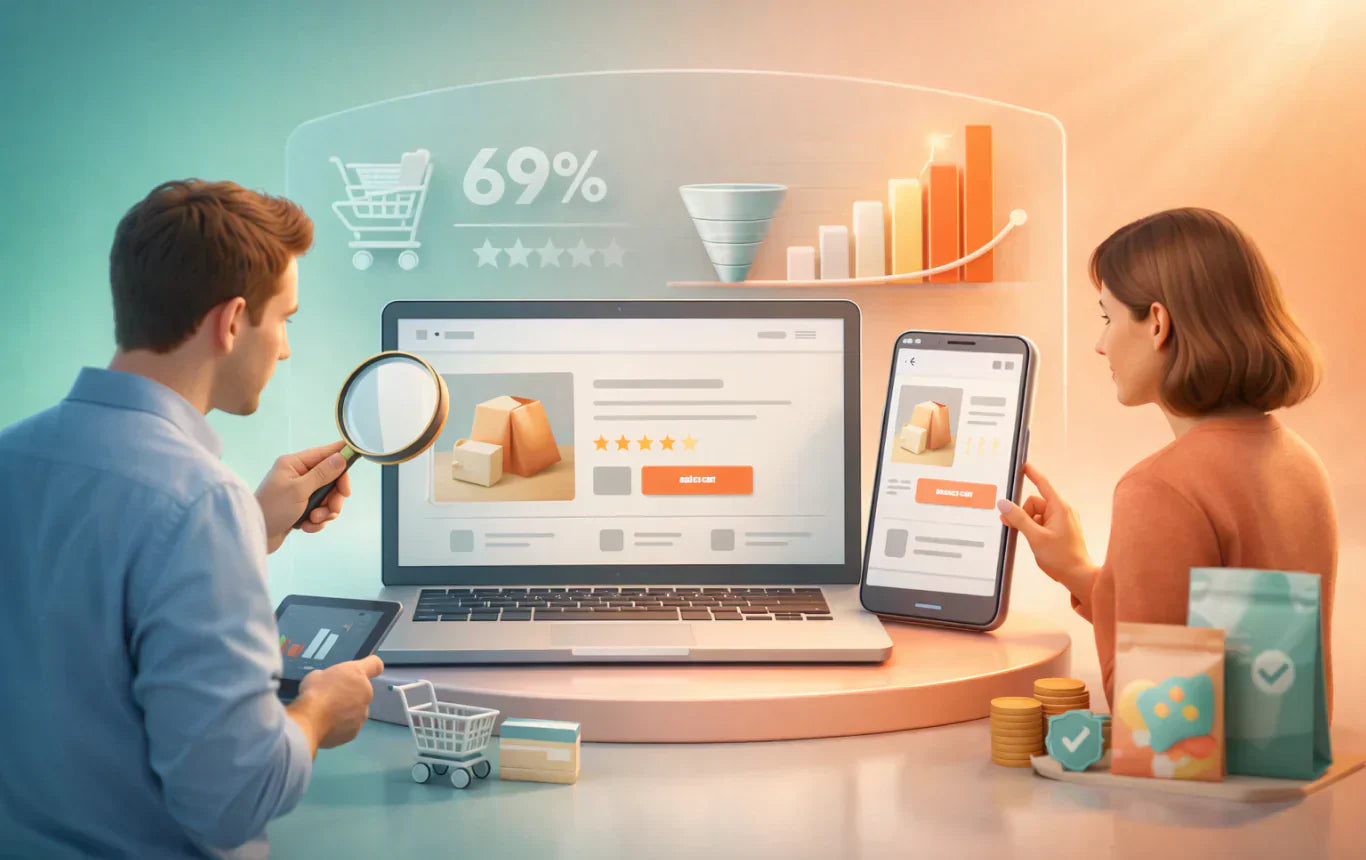TL;DR:
Table of Content
When Spooky Meets Strategy
What’s New in Graphic Design for Halloween 2025
Key Graphic Types to Use
How These Graphics Drive Conversions
Principles for Choosing Halloween Graphics
Practical Tools for Halloween Graphics on Shopify
How to Spookify Your Shopify Store Design
Halloween Graphic Styles & Trends Comparison (2025)
Common Mistakes That Scare Buyers Away
Where SANOMADS Comes In
Take Action Before the Witching Hour
When Spooky Meets Strategy
Halloween isn’t just about pumpkin spice and candy corn, it’s a huge visual moment for web stores. People arrive already in a mood: craving creepiness, fun and seasonal flair. But here’s the catch: if your graphics look cheap, load slowly or feel slapped-on, visitors bounce.
The best Halloween graphics do more than decorate; they build mood, reinforce your brand and drive conversions. This guide shows you up-to-date visual design trends, tools and strategies in 2025 so your Shopify store doesn’t just spook, it sells.
What’s New in Graphic Design for Halloween 2025

To stay ahead, you need to use graphics that align with current design movements and technology. Here are graphics-related trends to embrace this Halloween:
- Organic + imperfect visuals: Hand-drawn textures, slightly irregular shapes, “sketchy” lines. The “chicken scratch” and DIY styles are growing, because people like authenticity.
- Minimal-maximal contrast: Enough ornamentation to feel Halloween, but balanced so your site still loads fast and the visuals don’t overwhelm usability.
- Motion & micro-animations: Ghost loaders, hover effects, blinking eyes, subtle shadow shift. These small movements draw attention and make the site feel alive. Use them sparingly.
- Dark mode / moody themes: Rich blacks, deep purples, muted oranges, color palettes that feel atmospheric. Dark mode compatibility is important since many users switch their systems to dark.
- Interactive & playful elements: Switchers (day/night themes), cursor effects (ghost trailing), drag-and-drop pumpkins, etc. These aren’t just fun, they increase dwell time and engagement.
Key Graphic Types to Use - With Purpose

Here are specific graphic elements you should consider in your Halloween web design and how to use them wisely:
| Graphic Type | Use It for... | Why It Works | How to Do It Right |
|---|---|---|---|
| Ghost cursor / trailing icon | Homepage, product pages | Adds delight and gives personality without heavy load | Use vector or lightweight JS; disable for mobile if performance suffers |
| Animated loaders (pumpkins, skeletons) | When waiting (page loads, cart updates) | Keeps user attention, reduces perceived wait time | Compress animations; provide fallback static image |
| Theme switchers (dark vs light) | Allow user to toggle Halloween/moody theme | Personalization + novelty; good UX for different preferences | Pre-load both themes; make switching smooth |
| SVG spider webs, bats, webbing borders | Section dividers, headers, footers | Adds subtle spooky detail without heavy visuals | Optimize SVGs; avoid too many so page feels cohesive |
| Product imagery with Halloween props | Featured collections, hero banners | Puts viewers in the mood and shows how to style product | Maintain consistency; ensure product still looks real & clean |
| Hover effects & micro-animations | Buttons, thumbnails | Encourages clicks, boosts interaction | Use CSS transitions; avoid overuse to not distract |
How These Graphics Drive Conversions
Graphics aren’t just pretty, they have real effects on sales metrics when done right:
- Emotional resonance: Halloween graphics evoke mood; nostalgia, fun, little bit of fear. Emotions lead to impulse decisions, especially around seasonal buying.
- Trust & professionalism: Clean, well-designed graphics show customers you care about detail. A ghost-cursor or skeleton animation that’s glitchy or slow subtracts trust.
- Increased engagement / dwell time: Interactive elements, hover effects, theme switchers make people stay longer. Longer time on page gives more chance they click or buy.
- Clear user direction: Visual cues (animated arrows, glowing borders) guide eyes to sale-related elements; CTA buttons, limited-time bundles, etc.
- Mobile-first performance: Since many Halloween-shopping customers are on phones, graphics must be responsive, lightweight and mobile-friendly.
Principles for Choosing Halloween Graphics (Without Scaring Off Buyers)

Before adding creepy, dramatic graphics, make sure you follow these principles:
- Performance first: optimize images, use lazy loading, compress SVGs, use CSS for simple animations.
- Accessibility: ensure color contrast works for visual impairments; avoid overly flashing effects; include alt text.
- Consistency: pick 2-3 graphic styles (e.g. a ghost style, a bat motif, dark mood) instead of dozens, keeps visual identity strong.
- Temporality: holiday graphics are temporary. Make them easy to disable after Halloween so site returns to normal easily.
- User control: theme toggles, option to disable animations for those sensitive to motion.
Practical Tools for Halloween Graphics on Shopify
Want to implement fast and well? These tools and resources help:
- Use premium or marketplace Shopify themes with Halloween style or built-in support for seasonal toggles.
- Graphic asset marketplaces (e.g. Creative Market, Envato) for high-quality vectors, SVG animations.
- Lottie files / JSON-based animations for lightweight motion graphics.
- Tools like Figma or Canva to mock up graphics, then export optimized assets.
- Lazy loading tools / Shopify built-in performance apps to ensure animations/images don’t block page load.
Step-By-Step: How to Spookify Your Shopify Store Design
Here’s a roadmap to update your store graphics for Halloween in 2025, without hurting speed or brand:
-
Audit your current visuals
- Identify hero banners, product images, buttons, icons, logos.
- Test mobile vs desktop performance.
-
Define your Halloween visual style
- Pick a color scheme (dark mode contrast + accent color).
- Select 2-3 graphic motifs (ghosts, pumpkins, bats, webbing).
- Decide on animation intensity.
-
Update logo / typography
- Consider slight variations (logo with pumpkin, bat wings).
- Use seasonal fonts for headers or banners, but body text should stay legible and trusted.
-
Add interactive elements
- Ghost cursor or Halloween switcher.
- Animated hover effects.
- Subtle loaders.
-
Enhance product pages & banners
- Lifestyle images showing Halloween props.
- Limited-time Halloween bundles with visual emphasis.
-
Test & measure
- A/B test homepage with graphics vs without.
- Monitor load times, bounce rate.
- Check conversion lift on CTAs.
-
Remove after Halloween
- Keep assets modular so you can disable/remove easily.
- Record what worked for reuse next year.
Halloween Graphic Styles & Trends Comparison (2025)
| Style / Element | Visual Impact | Performance Load | Best Use Cases | Risk if Overused |
|---|---|---|---|---|
| Ghost cursor & trail | High delight, novelty | Low-medium | Homepage, hero sections, light touch | Can be distracting if too many moving parts |
| Dark mode / moody theme | Strong emotional resonance | Low (if designed well) | Brands selling darker or luxury styles | May reduce visibility of light imagery |
| Animated loaders (pumpkins, skeletons) | Keeps interest during wait | Medium | When expecting longer wait times (e.g. custom orders) | Misused: slow speed, annoy users |
| Hand-drawn textures / “chicken scratch” | Authentic, creative vibe | Low | Artisan / handmade brands | Can look unprofessional if not consistent |
| Hover effects & micro-animations | Encourages clicks | Low-medium | Buttons, product images, navigation | Too much → clutter, bugginess on low end devices |
Common Mistakes That Scare Buyers Away

Even with great graphics, missteps hurt more. Watch out for:
- Too many animations or heavy visuals that slow page loads, people leave before seeing anything.
- Low contrast or hard-to-read fonts. Halloween fonts are fun, but shouldn’t reduce legibility.
- Crowding: stacking many visual effects makes your page feel like a haunted carnival (in bad way).
- Not optimizing for mobile: what looks amazing on desktop can break on phones.
- Forgetting end of Halloween: failing to remove seasonal visuals ruins long-term branding consistency.
Where SANOMADS Comes In: Design + Conversion Experts
You can get inspiration, but turning that into real conversion + sales is a different level and this is where SANOMADS excels.
Here’s what we help Shopify merchants do:
- Develop a Halloween graphic style guide matching brand voice + performance goals.
- Implement lightweight animations and motion that load fast.
- Optimize graphics for mobile first (thumb-friendly buttons, responsive images).
- A/B test graphic changes (for example, homepage vs Halloween hero vs control) to ensure ROI.
- Strategize graphics plus campaigns: bundles, seasonal promos, social assets and email templates, all matching design.
Checkout: Halloween Campaign Ideas for Shopify Merchants
Take Action Before the Witching Hour
Every day you ruminate is a day your competitors are priming their visuals. Halloween arrives fast. If your store isn’t visually aligned, you’re leaving sales on the table.
Book a FREE 30-minute Halloween Design & Conversion Audit with our Shopify-Certified Experts. Let’s map out a spook-proof design plan that engages viewers, reduces bounce and boosts sales.










